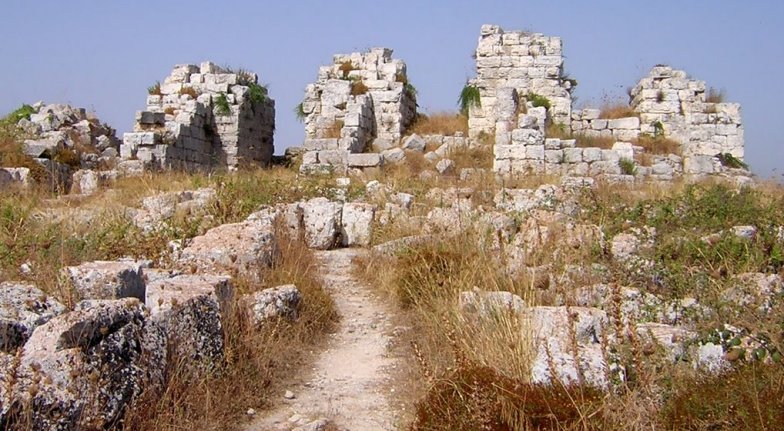Eurialus
Just outside Syracuse, 400' above sea
level, Castello Eurialus is one of the best remaining Greek fortresses
not just in Sicily, but in the western world. The fortifications
here were started by Dionysius I (c.432-367 BC) in 402 BC as an outer
defence for Syracuse. In 402 BC he began building the city walls Syracuse
and finished them in 397 BC. This campaign included Eurialus
castle which was thought to be impregnable. In the Roman wars the
site is thought to have been improved by Archimedes (d.c.212 BC) on
behalf of Jerome II of Syracuse, but this did not stop the Romans
taking the city during the second Punic War (218-201 BC) and killing
the ancient Archimedes, who was in his mid 70s, at the end of a 2 year
siege. Despite hostility to Rome, Eurialus was apparently
bypassed by the Romans and not attacked. Although it was still
occupied well into the Byzantine era, it gradually fell into ruin and
was utilized to repair other fortifications against the Muslims.
Description
The fortress stands at the highest point of the hill, about 400' above
sea level, that was approached from the west along a ridge. The
ground fell away more sharply on the other 3 sides. The name
Eurialus comes from the Greek word Euryalos, meaning shaped like the
head of a nail. This accurately describes the fortress position
at the apex of the Epipolis plateau.
The castle entrance was protected by 3 ditches. The first 300'
from the next is merely giving the fortress a section of open
ground. There then followed a bigger chevron shaped ditch
protecting a defensive bastion, behind which is the main ditch, 30'
deep. In the base of this are tunnels, one of which leads to the
ditch south of the main defences. At the south end of the main
ditch was a drawbridge. The main fortification was rectangular
and was defended by 5 square towers which were originally about 50'
high and supported catapults. They were crenellated and had
rainwater spouts in the shape of lion's heads, some of which have been
rescued and placed in the museum. There are also 3 water cisterns
in the main defence. To the east are further defences in a
triangular enclosure which is called the Tryolon due to its 3
gates. A wall from this ran down to the Dionysian walls. The whole structure is made out of fine ashlar similar to that found at
Erice and Cefalu main gate, the ancient city walls a Palermo and the temple at Segesta, while there is a total lack of Roman brick and tile as found at the many Byzantine castles on the island - see Eufemio castle for a brief list of these.
Why not join me here and at other Sicilian
castles? Information on this and other tours can be found at Scholarly
Sojourns.
Copyright©2019
Paul Martin Remfry

